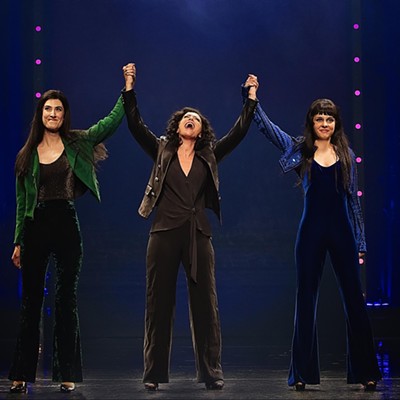Support Us
Houston's independent source of
local news and culture
account
- Welcome,
Insider - Login
- My Account
- My Newsletters
- Contribute
- Contact Us
- Sign out
Tin Soldiers and Nixon Coming: New Book Tells All Sides of the Kent State Shootings
Bob Ruggiero April 15, 2016 8:00AM
[
{
"name": "Related Stories / Support Us Combo",
"component": "11591218",
"insertPoint": "4",
"requiredCountToDisplay": "4"
},{
"name": "Air - Billboard - Inline Content",
"component": "11591214",
"insertPoint": "2/3",
"requiredCountToDisplay": "7"
},{
"name": "R1 - Beta - Mobile Only",
"component": "12287027",
"insertPoint": "8",
"requiredCountToDisplay": "8"
},{
"name": "Air - MediumRectangle - Inline Content - Mobile Display Size 2",
"component": "11591215",
"insertPoint": "12",
"requiredCountToDisplay": "12"
},{
"name": "Air - MediumRectangle - Inline Content - Mobile Display Size 2",
"component": "11591215",
"insertPoint": "4th",
"startingPoint": "16",
"requiredCountToDisplay": "12"
}
,{
"name": "RevContent - In Article",
"component": "12527128",
"insertPoint": "3/5",
"requiredCountToDisplay": "5"
}
]
67 Shots: Kent State and the End of American Innocence
By Howard Means
288 pp.
Da Capo Press
$25.99
Mention the tragic shootings at Kent State University on May 4, 1970 - and most people’s knowledge might be limited to the subjective lyrics of Neil Young’s rock anthem “Ohio.” Or from seeing the famous Pulitzer Prize-winning photo by John Filo of 14-year-old runaway Mary Ann Vecchio screaming in anguish over the dead body of Jeffrey Miller.
But as history author Means makes blindingly clear in this book, there is hardly any side, person, or group in the conflict that really deserves clear-cut blame for the chaotic day in which Ohio National Guardsmen shot and killed four students and wounded nine others (including one paralyzed for life).
By the spring of 1970, college campuses across the United States had seen hundreds of protests organized by students against the Vietnam War, Richard Nixon’s military thrust into Cambodia, or any number of social and political causes.
Kent State was hardly the hotbed of protest of a Berkeley or a Yale, but several events in a short span of time set the campus on edge and built tension: A violence-baiting speech by Yippie leader Jerry Rubin, a nighttime riot at a popular string of local bars that pit townies vs. students, and the burning down of the campus ROTC building.
It was that last incident that led Kent State Mayor LeRoy Satrom to call upon Ohio Governor Jim Rhodes to send in the National Guard to help restore calm. As well as quell a planned noon student protest, with the approval of Kent State President Robert White.
Rhodes – a law-and-order man up for reelection – was happy to oblige to prove his toughness. But with no clear directives or instructions, no commanding leaders, and ranks made up of nervous, sleep-deprived young men about the same age as the protesters holding live ammunition, it was the proverbial recipe for disaster.
And while immediate public reaction ran the gamut from "those stinking, protesting hippies got what they deserved!" to "how could unarmed college students get gunned down in cold blood on their own campus?" the truths - as Means details - were far more nuanced.
Combing through historical archives, then-contemporary eyewitness accounts, court transcripts, and new interviews, Means weaves a story with multiple “truths” and perspectives. And nobody comes out unscathed: the soldiers (some of whom were blatantly out to “get hippies”), the students (some of whom threw bags of human feces at the guards), the administrators, and the townspeople.
And in the pre-iPhone/Internet/24 hour news cycle age, miscommunication or late communications added to the confusion (at one point, locals outside the university got word that it was students who were killing Guard members).
In the end, the National Guard fired the 67 shots of this book’s title in just 13 seconds. Thirteen seconds to make history and take four student lives – two of whom were not even participating in the protest, but simply in the wrong place at the wrong time.
“When you pick all of these ingredients, what other kind of cake are you going to end up with?” Means quotes Guardsmen Art Krummel recently, “I mean, take young, tired, poorly trained people, hand them bullets, say ‘You’re going to oppose these other angry young people who are going to be throwing rocks, and you’re going to be…put in dangerous situations,’ and then expect that no one’s going to get shot, that’s kind of a pretty unrealistic expectation.”
In the end, Means pulls together – if in a somewhat dryly-written fashion – the Rashomon-like details of one of the most memorable and infamous incidents of the 1960s. And – like a tome on the sinking of the Titanic or the assassination of Abraham Lincoln – in 67 Shots the reader can’t help but feel his own heart racing as the narrative and all the single decisions that could have changed things completely race forward to their inevitable conclusion.
KEEP THE HOUSTON PRESS FREE...
Since we started the Houston Press, it has been defined as the free, independent voice of Houston, and we'd like to keep it that way. With local media under siege, it's more important than ever for us to rally support behind funding our local journalism. You can help by participating in our "I Support" program, allowing us to keep offering readers access to our incisive coverage of local news, food and culture with no paywalls.
Bob Ruggiero has been writing about music, books, visual arts and entertainment for the Houston Press since 1997, with an emphasis on classic rock. He used to have an incredible and luxurious mullet in college as well. He is the author of the band biography Slippin’ Out of Darkness: The Story of WAR.
Contact:
Bob Ruggiero
Trending Arts & Culture
- Best Bets: Earth Day, Noche Caliente and a Spring Festival
- The Story Stalls But The Beat Goes On in The Cher Show at TUTS
- Reviews For The Easily Distracted:
Abigail
-
Sponsored Content From: [%sponsoredBy%]
[%title%]

Don't Miss Out
SIGN UP for the latest
arts & culture
news, free stuff and more!
Become a member to support the independent voice of Houston
and help keep the future of the Houston Press FREE
Use of this website constitutes acceptance of our
terms of use,
our cookies policy, and our
privacy policy
The Houston Press may earn a portion of sales from products & services purchased through links on our site from our
affiliate partners.
©2024
Houston Press, LP. All rights reserved.





